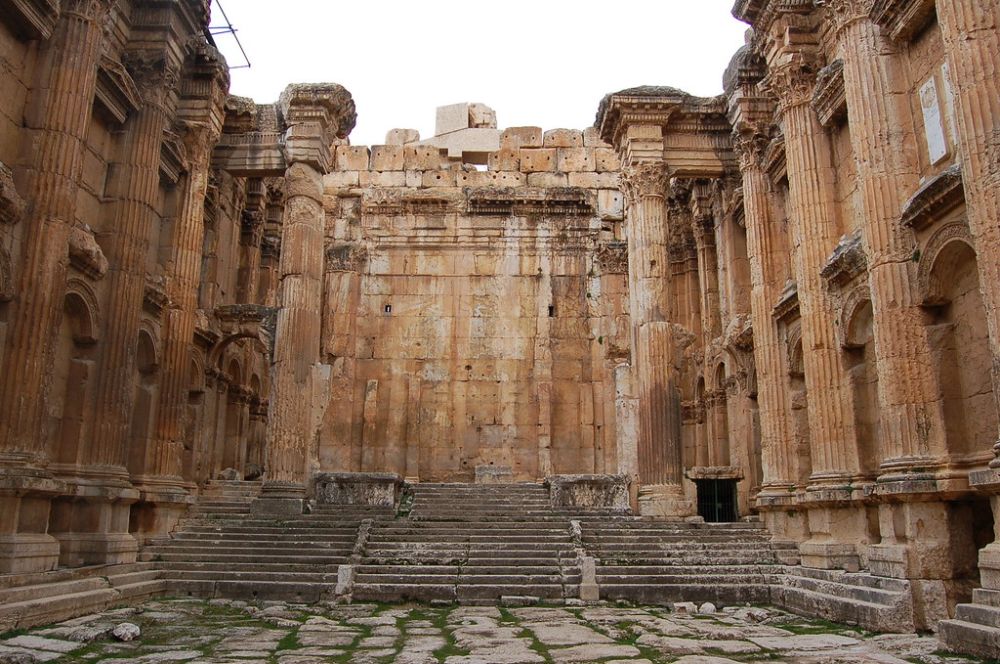

The Temple of Bacchus is one of the most remarkable monuments within the archaeological complex of Baalbek in Lebanon, often hailed as the "City of the Sun." Baalbek is located in the Bekaa Valley, which has been a site of settlement and cultural exchange for thousands of years. The history of tourism in Lebanon as it relates to the Baalbek ruins dates back to the 19th century when European travelers began to explore the Middle East in greater numbers, fueled by an interest in the region's ancient civilizations and Biblical history.
The Temple of Bacchus is considered one of the best-preserved Roman temples in the world. Built in the 2nd century CE, it was dedicated to Bacchus, the Roman god of wine, revelry, and fertility. It stands out for its grandeur and the intricacy of its architectural details. The temple's preservation and the awe-inspiring artistry of its masonry, sculptures, and friezes have made it a central attraction for tourists visiting Lebanon.
Tourism in Lebanon has fluctuated over the years, subject to the ups and downs of regional stability. During the early 20th century, Lebanon was known as the "Switzerland of the Middle East" for its scenic landscapes and vibrant cultural scene. The ancient cities of Baalbek, Byblos, and Tyre became prime destinations for those interested in history and archaeology.
However, the civil war that ravaged the country from 1975 to 1990 significantly affected Lebanon’s tourism industry. Post-war, Lebanon invested in rebuilding its tourism infrastructure and marketing its cultural heritage sites to international visitors. The Baalbek ruins, including the Temple of Bacchus, have played a major role in this resurgence of the tourism sector.
In recent years, Lebanon has been focusing on sustainable and experiential tourism. Travelers are now looking for authentic experiences, and this trend has seen a rise in eco-tourism, agro-tourism, and cultural festivals. For the Baalbek region, the renowned Baalbek International Festival has been a significant draw. The event showcases musical and artistic performances held within the ancient ruins, particularly at the Temple of Bacchus, creating a magical fusion of the ancient and the contemporary.
The Lebanese Ministry of Tourism has also been active in promoting the Baalbek ruins through various media and travel fairs, while local initiatives have aimed to improve visitor facilities and enhance the overall tourist experience at the site. The Temple of Bacchus and the larger Baalbek complex were declared UNESCO World Heritage sites in 1984, which has helped in underscoring their global historical significance and appeal as tourist destinations.
Visiting the Temple of Bacchus today offers an unforgettable journey through time. The temple's towering columns, exquisite sculptures, and massive stone blocks continue to captivate the imagination, allowing visitors to glimpse into the grandeur of ancient Roman engineering and artistry. The site's deep historical roots, combined with the Lebanese people's renowned hospitality, make the Temple of Bacchus at Baalbek a must-visit for any traveler interested in history, archaeology, and the enduring legacies of past civilizations.